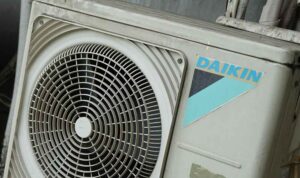EEA plots rise in cooling demand
30th September 2025
DENMARK: A new report from the European Environment Agency predicts that, in future, southern European member states could be consuming 71% of total annual energy for residential cooling.
The increased demand for cooling has been highlighted as one of the environmental risks in the latest state of the environment report. It reveals that, in 19 European countries, energy used for cooling in residential buildings tripled between 2010 and 2019.
In the EU-27, the amount of energy used for cooling in residential buildings represented only 0.4% of the total final energy consumption in the residential sector in 2019. However, this percentage was much higher in southern European countries such as Malta, Cyprus and Greece, at 11%, 10% and 5%, respectively
In the future, it predicts that Greece, Italy, Portugal and Spain could consume 71% of total annual energy use for cooling in residential buildings in the EU.
While, in heating, there was a gradual move from gas to biomass and increasingly to heat pumps, this brought modest energy efficiency gains in buildings. As of 2023, 26.2% of heating and cooling energy needs in the EU were provided by renewables.
The report recommends a stronger focus on a two-pronged strategy to boost the thermal efficiency of buildings and phase out fossil heating systems.
The state of the environment report is published every five years to provides decision makers at European and national levels as well as the general public with a comprehensive and cross-cutting assessment on environment, climate and sustainability in Europe.
Europe’s environment 2025 is the 7th state of the environment report published by the EEA since 1995.







